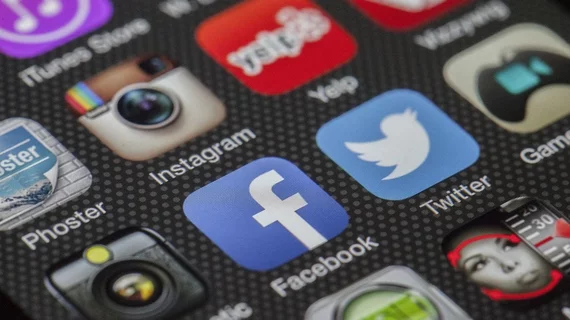Radiology is well-suited for Instagram, but the field isn’t taking advantage of its image-friendly potential
Radiologists are reaching large swaths of followers by posting clinical imaging cases on Instagram. And new research suggests more individuals and societies should take advantage of this image-friendly platform to increase awareness of the field.
Most studies investigating radiology’s connection to social media focus on Twitter and Facebook, overlooking the more than 1 billion monthly active Instagram users, experts explained Sept. 23 in Academic Radiology. A pair of NYU Langone Health doctors recently found that a number of radiology accounts are already taking advantage of the platform, with some attracting more than 50,000 followers and upward of 41,000 views on a single post.
The majority of these numbers come from academic radiologist-run accounts, according to Vinay Prabhu, MD, and Kamran Munawar, MD, with the New York institution. But both believe the specialty has only scratched the surface on Instagram’s capabilities.
“These high volumes demonstrate the potential for Instagram as a platform for content dissemination and promotion,” Prabhu and Kamran wrote. “Radiology in particular, as an image-rich specialty, has the potential to attract interest from a broad Instagram user base, including radiologists and nonradiologists alike.”
Two independent raters identified 49 accounts corresponding to 459 posts for the study. More than 40% were radiologist-run (mostly academic) followed by rad practices (12%) and professional societies (10%). A whopping 75% of posts depicted images or videos, with 65% of these showing clinical cases. This usage is not where it could be, however, especially considering the growing number of international radiology societies, the authors noted.
“Professional societies may find Instagram a helpful way to recruit members, elicit participation in sponsored courses, or increase traffic to their website by posting recent updates (e.g., daily imaging cases, new peer-reviewed research),” they added. “Despite this tremendous potential, only 7% of all posts analyzed were promotional in nature.”
In order to maximize engagement, radiologists and professional groups should focus on infrequent, stylized artwork posts, which proved to be the only predictor of engagement.
The authors noted that only 2% of posts violated HIPAA rules, but cautioned users to take these regulatory concerns seriously.
“Social media platforms like Instagram may provide the field of radiology an ideal avenue for communication, case presentation, and promotion during times of social distancing,” they wrote. “Radiology-focused accounts should actively engage on, and consider opportunities for expanded application of, this unique image- and video-based social media platform,” they added later.
Read the entire study here.

